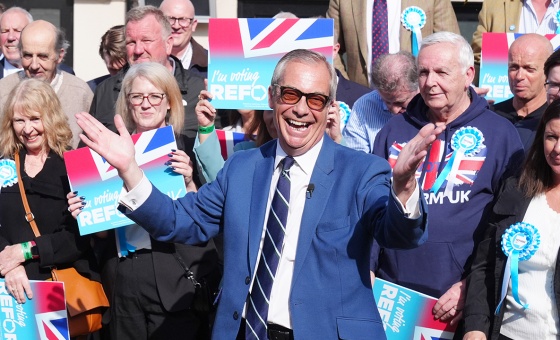This is the last article you can read this month
You can read more article this month
You can read more articles this month
Sorry your limit is up for this month
Reset on:
Please help support the Morning Star by subscribing here
THREE-QUARTERS of a century ago this winter, as ice and snow hit Scotland’s west coast, from the shipyards of the mighty Clyde to the Gulf Stream-warmed inlets like Loch Ewe, a tiny fleet of cargo ships and royal naval craft assembled awaiting secret and sealed orders.
They would soon set sail as the first of many heroic flotillas that would carve their proud name and place in World War II history as the legendary Arctic convoys.
Adolf Hitler launched his surprise blitzkrieg — codenamed Barbarossa — against the Soviet Union in June 1941.
Despite his lifelong hatred of communism and lifelong opposition to the Soviet Union, Britain’s prime minister Winston Churchill realised now he and Joseph Stalin were allies in the battle to defeat Hitler and the nazi dictator’s plans for world domination.
Both Churchill and British popular public opinion knew that we needed to offer the Soviet people as well as the Red Army and navy our support, both in military materiel and to boost morale.
Across Britain local committees sprang up where even local Tory bigwigs, often alongside local Communist Party activists, would appeal for “Aid for Uncle Joe.”
Working people, British and Soviet, were united in their hatred of Hitler and his jackbooted nazi bully boys.
They realised that his crude and divisive anti-semitism held nothing for working people whatever their racial or cultural origins.
Just as today, workers in Leicester and Leningrad, Manchester and Moscow, Arkhangel and Aberdeen had much in common with each other despite the immense distances that separated the lands in which they lived.
British workers too were watching with interest how their Soviet sisters and brothers were facing the many challenges building a totally new kind of exciting socialist society since their revolution in 1917.
British people gave generously; but how to deliver such aid? Most of the 1,300-plus miles of Europe between London and Moscow were firmly under the nazi jackboot.
There was a route from Britain to Russia, but never an easy one. The sea route went from the west coast of Scotland towards Iceland, then around the top of nazi-occupied Norway and across the Barents Sea into the northern Soviet deep-water ports of Murmansk and Arkhangel, both inside the Arctic Circle.
These were some of the most dangerous waters in the world, but it was across these waters that the heroic Arctic convoys would deliver tanks, fighter planes, fuel, ammunition, raw materials and food.
This route was particularly dangerous due to the extreme cold, the proximity of German air, submarine and surface forces in occupied Norway and also because of the likelihood of all kinds of severe weather, fog, gales and drifting ice floes and even pack ice.
One real and constant danger was of ships’ masts and rigging icing up. As the salt spray froze and grew, there was a danger that the ship could become top heavy and eventually turn turtle.
Crews would battle to cut off the heavy build-up of icicles using axes, hammers and steam hoses. It was a constant, freezing and hazardous struggle.
Even Winston Churchill would be forced to call this sea route to the Soviet Arctic ports “the worst journey in the world.” In all, 66,000 people took part in those horrific journeys.
In winter at these northern latitudes there is almost no daylight and the ships had to navigate difficult and icy waters in constant darkness.
On the other hand, summer convoys were subject to round-the-clock attacks in the constant daylight. The loss rate for ships was higher than any other allied convoy route.?
There were 78 convoys between late 1941 and spring 1945. About 1,400 merchant ships took part to deliver the essential supplies.
Over four million tons of supplies were delivered to our Soviet allies. As well as tanks and aircraft, they delivered vital items like trucks, tractors, telephone wire, railway locomotives and even boots.
Over four years, the convoys delivered 7,000 warplanes, 5,000 tanks and other battlefield vehicles, ammunition, fuel, food, medicine and further emergency supplies.
Eighty-five merchant vessels and 16 Royal Navy warships were sunk. These included two cruisers, six destroyers and eight other escort ships. Lives lost totalled over 3,000.
The convoys not only delivered valuable military materiel and food but, just as importantly, also tied up a substantial part of Hitler’s hard-pressed sea and air forces.
One German battleship, three destroyers and many other vessels including over 30 U-boat submarines were destroyed by the convoys and their support vessels.
Once the war was won Churchill and his government wanted, as quickly as possible, to hide any evidence of solidarity or friendship between the British and Soviet people.
The hero sailors of the Artic convoys were among the most badly treated victims of this new cold war policy.
It wasn’t until 2012 that our government got around to awarding medals to veterans of the Arctic convoy missions.
Finally, 67 years after the last convoy, they minted an Arctic Convoy Star medal, more than 18,000 have been issued.
Most were sent by post.
The Russian government has also recently presented British participants in the convoys with a Russian medal named after Fyodor Ushakov, an 18th-century naval commander who never lost a battle and is the patron saint of the Russian navy.
The medal was created in 1944 and is awarded to veterans “for personal courage and valour shown during World War II while participating in the Arctic convoys.”
Today we know that more than 3,000 allied seafarers lost their lives sailing in the Arctic convoys.
They made that ultimate sacrifice to fight the nazis, fascism and the racist and xenophobic ideas behind Hitler’s megalomania.
Surely we owe it to their memory to make sure that no present-day politician — be it the likes of Donald Trump, Nigel Farage or Marine Le Pen — manages to recover those hateful philosophies from the cesspit of history and make them respectable again.








